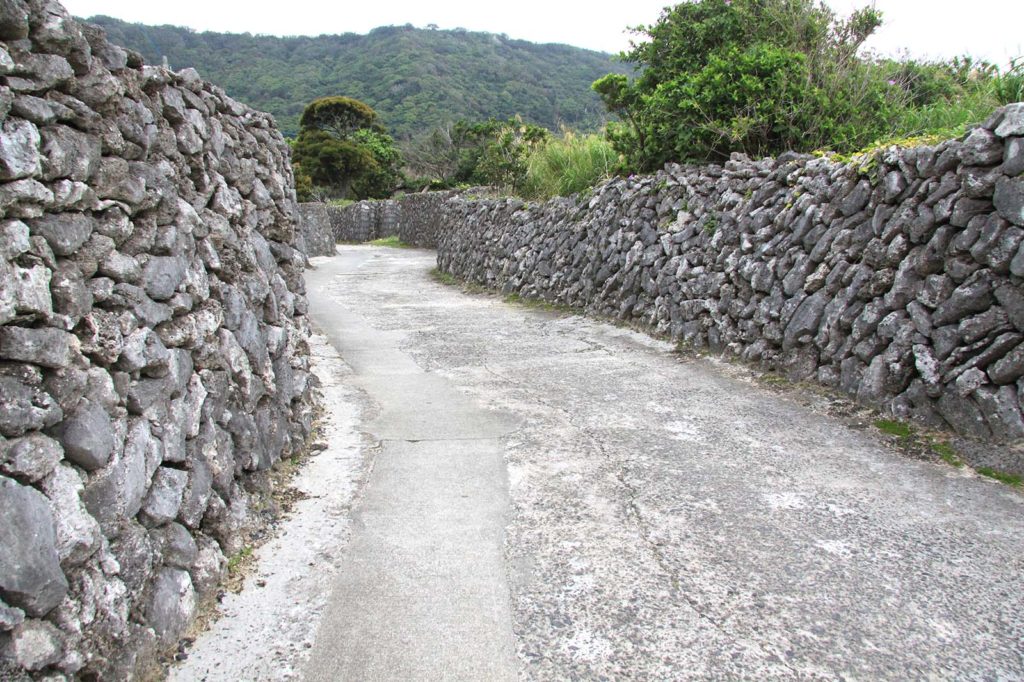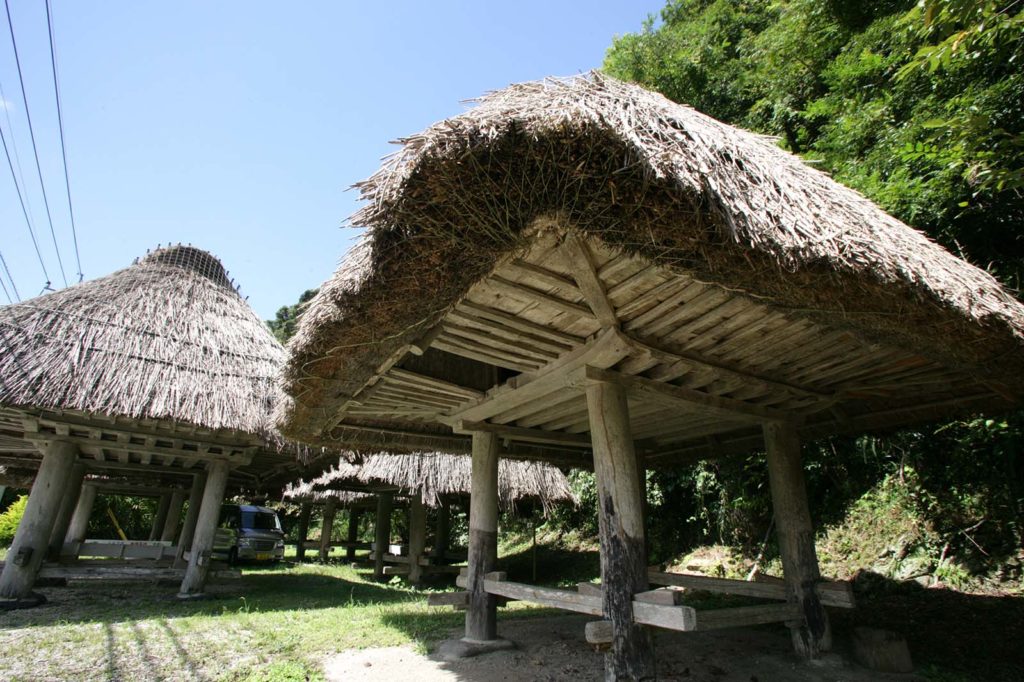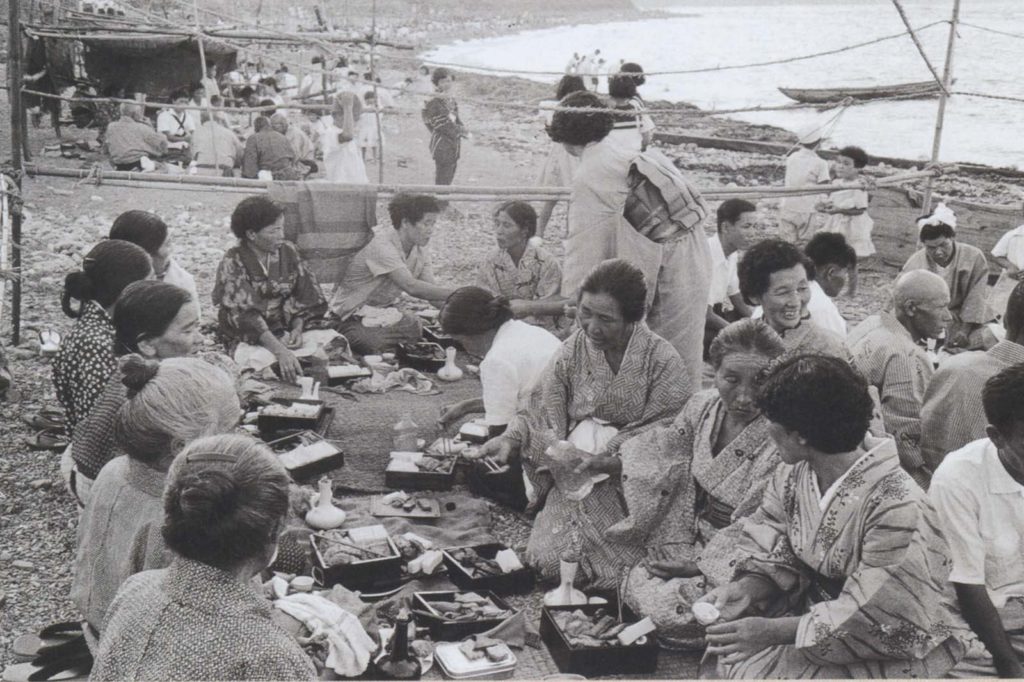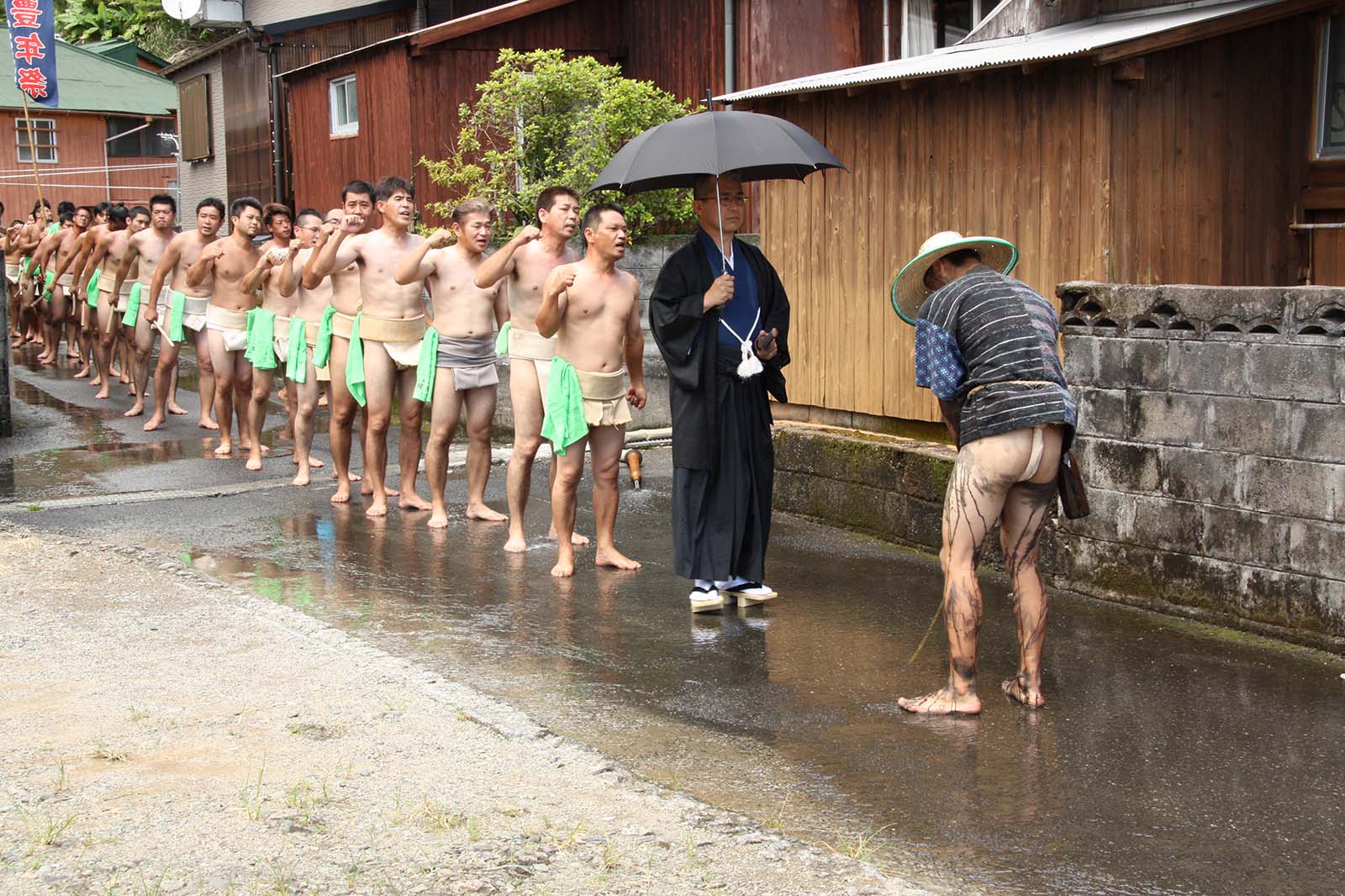
Unique Culture
Amami Oshima’s Sumo Culture
In Amami Oshima, the sumo culture is so rooted in the region that there are sumo wrestling rings in each village and school grounds, and the men are said to wear a sumo belt at least once in their lives. The festival reflects particularly strong in year-round events. At Jyugoya harvest festivals, a wrestler announces the beginning of the festival by bellowing, “Sumo, sumo!” Matches will be held for thanksgiving ceremonies and to celebrate Respect for the Aged Day. Newborn boys are taken to plant their feet on a sumo ring in the parents’ hope that the boy will grow up strong. In some villages, wrestlers will bravely mount the sumo ring and dance while singing a sumo-themed song.

A scene from the furidashi of a harvest festival held on August 15th of the old Chinese calendar. At the front are a god and a person clearing people from the sacred road they slowly meander to the sounds of Yo-iya yo-iya, waido, waido from the toneya where religious rituals were held to the sumo ring, site of the former holy ashage structure. (Uken-son)
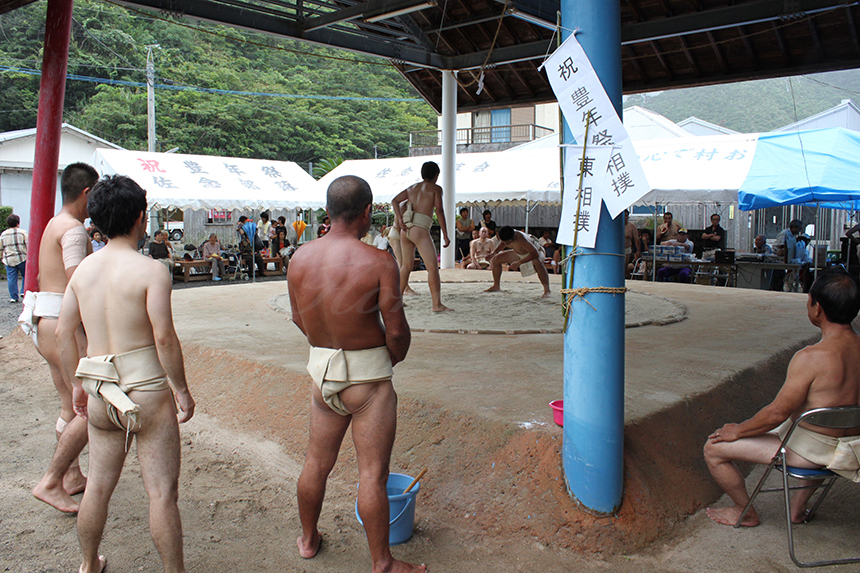
Sumo bouts are often held on Hachi-gatsu Jyuugoya harvest festivals, believed to have begun at the behest of Satsuma officials stationed there during the era of Satsuma clan rule.(Uken-son)
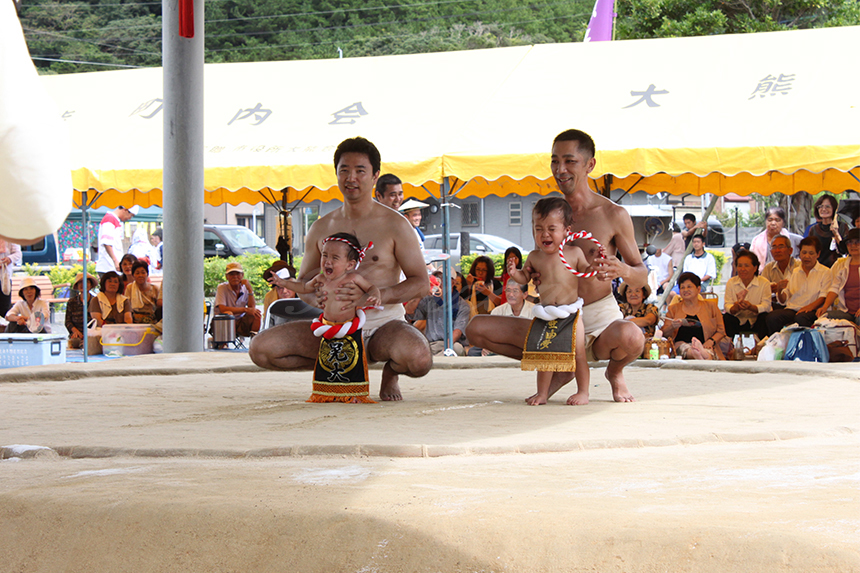
Baby boys who have not reached 1 year of age wear mawashi belts and are taken onto the ring in the hopes of growing up strong in the “First Sumo Ring Appearance” ritual.(Amami-city)
Amami has been a land where sumo is and has been popular among boys from the time they were tots, and many from the islands of Amami go on to become professional sumo wrestlers. Particularly notable is Taro Asashio, who became the 46th professional sumo yokozuna in history in 1959. No wrestlers from Kagoshima Prefecture have yet to rise higher in the sumo world.

Islander Sumo
(Nanto Zatsuwa, (Sagenta Nagoya)/ Amami City
Amami Museum)
Photo and captions / HORIZON Editorial Office
